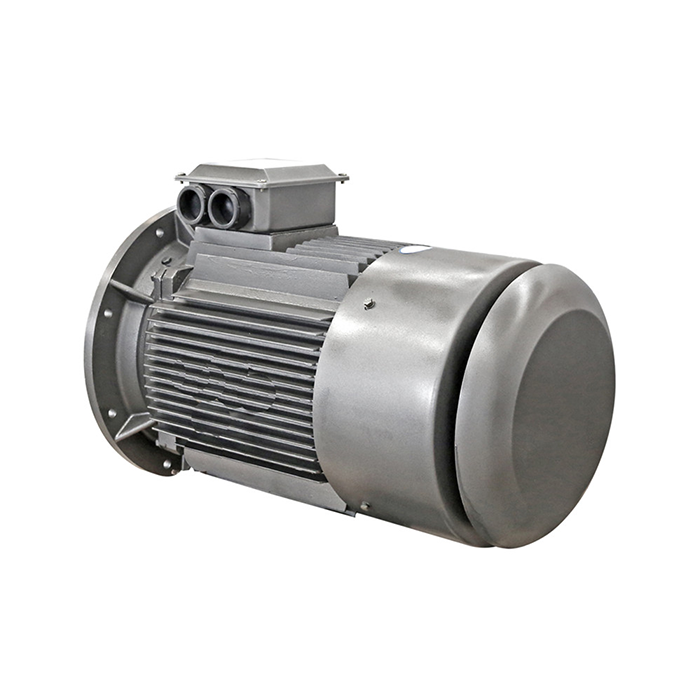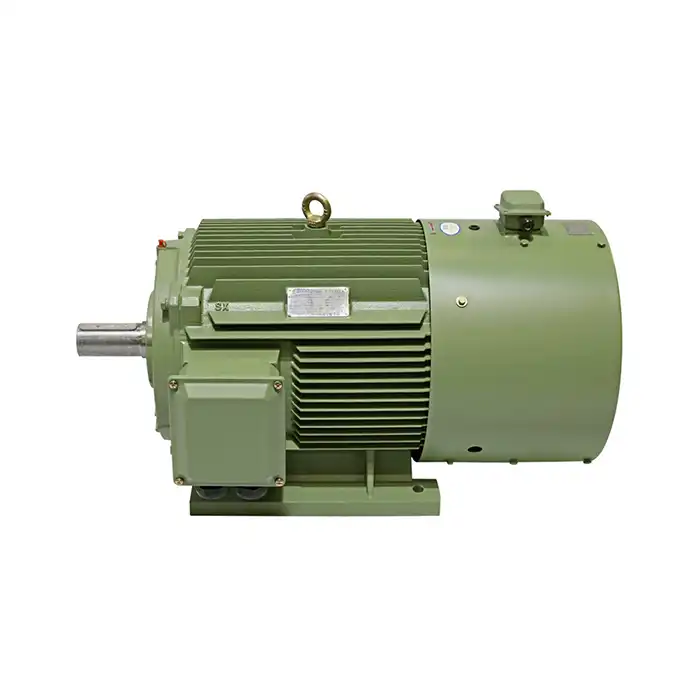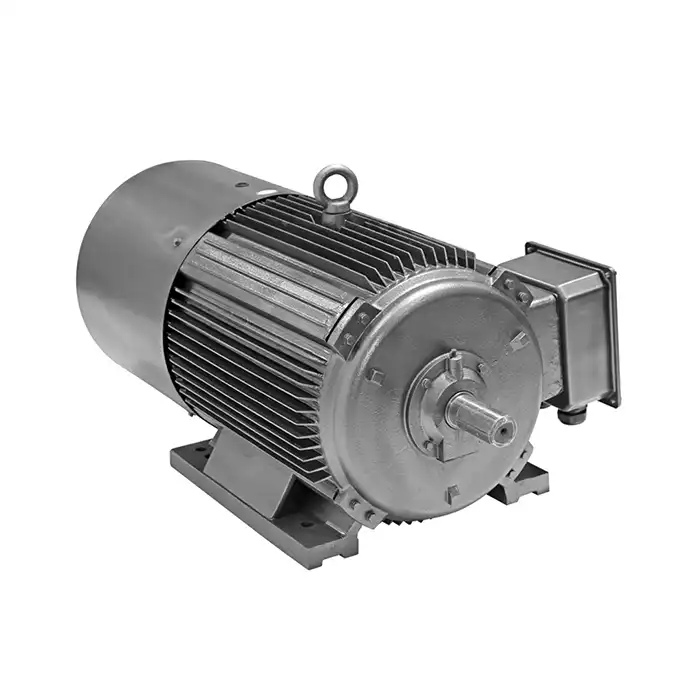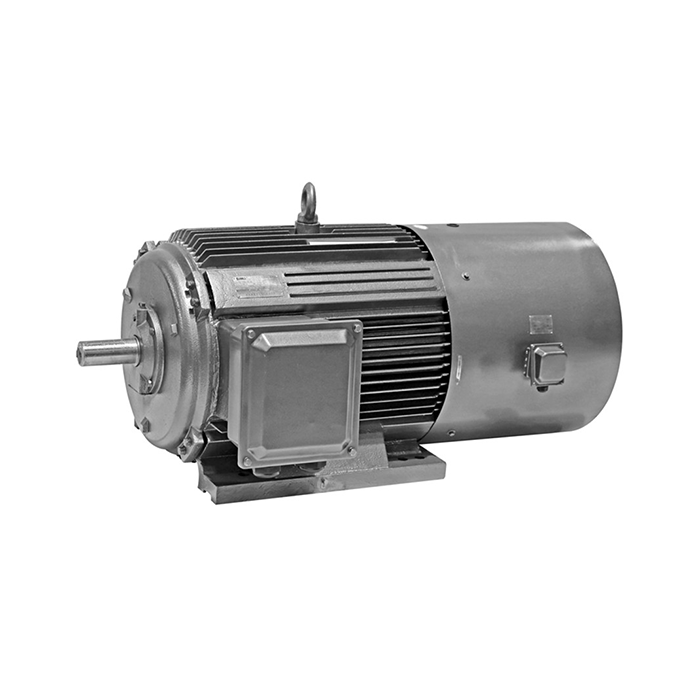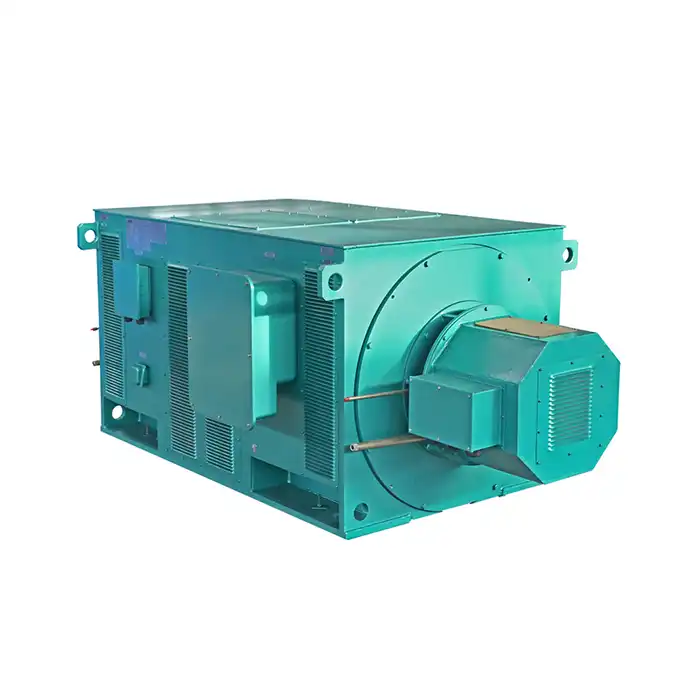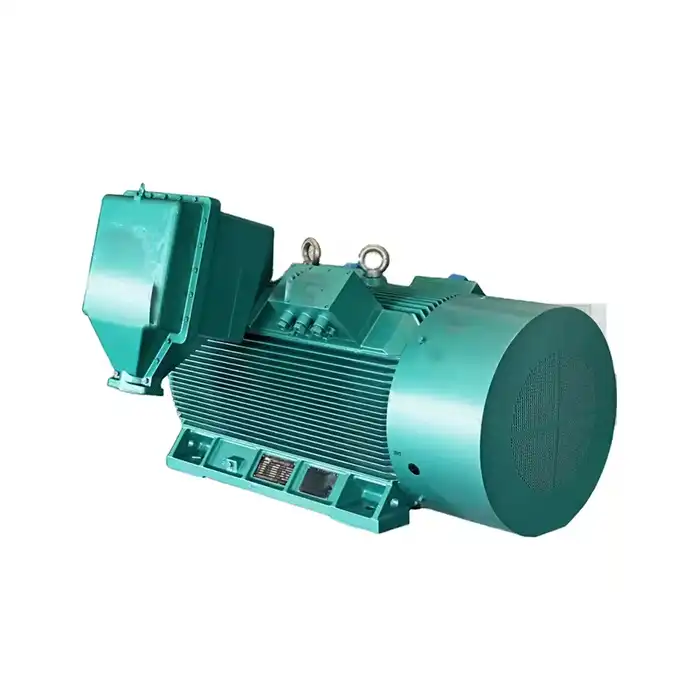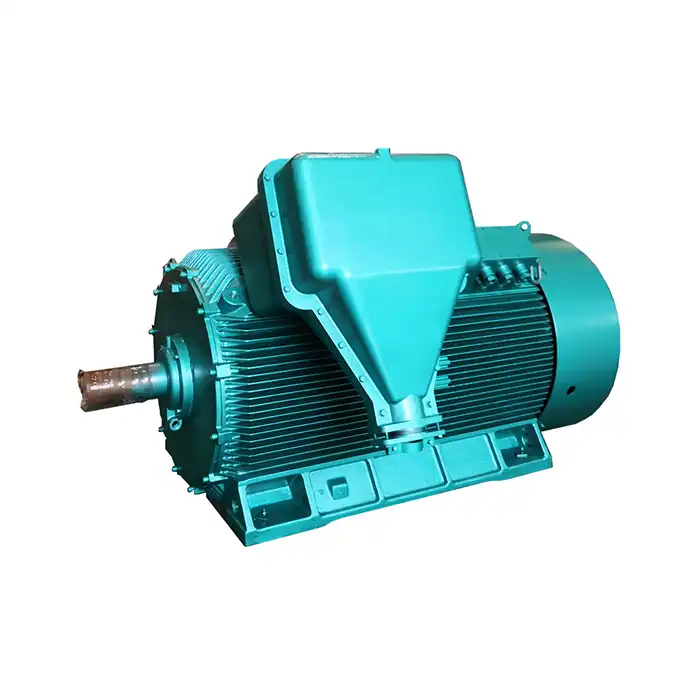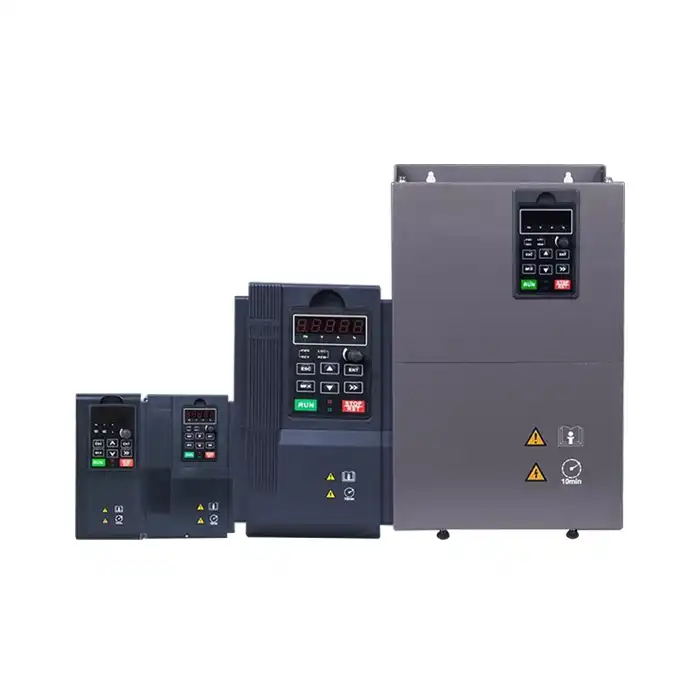How Do Temperature Changes Impact Z2 DC Motor Performance?
Z2 DC motors are widely utilised in many different industrial applications, and their performance can be greatly impacted by temperature variations. Maintaining the best possible motor longevity and efficiency requires an understanding of these effects. This page explores how temperature variations affect Z2 DC motor performance, providing information on heat impacts, ideal temperature ranges, and efficient cooling techniques.

Series:Z2
Frame number: 11-112
Application:Z2 series motors are small DC motors for general industrial use and can be used in metal cutting machine tools, papermaking, dyeing and weaving, printing, cement, etc. The generator can be used as power source, lighting or other constant voltage power supply.
Power range:0.8-200kW
Voltage range: 110V,220V, etc.
Certificate: standard JB1104-68 .
Advantage:Suitable for outdoor use and strong corrosion resistance.
Others: SKF, NSK, FAG bearings can be replaced according to customer requirements.
Heat Effects on Motor Efficiency and Torque
Temperature variations can have substantial impacts on the efficiency and torque output of Z2 DC motors. As temperatures rise or fall, several key aspects of motor performance are affected:
Resistance Changes in Windings
One of the primary ways temperature impacts Z2 DC motor performance is through changes in winding resistance. As temperatures increase, the resistance of the copper windings also increases. This rise in resistance can lead to:
- Reduced current flow through the windings
- Decreased torque output
- Lower overall motor efficiency
Conversely, when temperatures drop, winding resistance decreases, potentially leading to increased current flow and higher torque output. However, extremely low temperatures can introduce other challenges, such as increased viscosity in lubricants.
Magnetic Field Strength Alterations
Temperature changes can also affect the strength of the magnetic field within the Z2 DC motor. As temperatures rise, the magnetic properties of the motor's permanent magnets may degrade slightly, resulting in:
- Reduced magnetic field strength
- Decreased torque production
- Lower overall motor efficiency
This effect is generally more pronounced at higher temperatures and can become a significant factor in motor performance if not properly managed.
Thermal Expansion and Mechanical Stress
Temperature fluctuations can cause thermal expansion or contraction of motor components. This can lead to:
- Changes in bearing clearances
- Increased mechanical stress on components
- Potential misalignment of motor parts
These mechanical effects can result in increased friction, reduced efficiency, and potentially accelerated wear on motor components if not accounted for in the motor design and maintenance practices.
Optimal Temperature Ranges for Peak Performance
Maintaining Z2 DC motors within their optimal temperature range is crucial for ensuring peak performance and longevity. Let's examine the ideal temperature ranges and factors that influence them:
Recommended Operating Temperatures
The optimal operating temperature range for Z2 DC motors typically falls between 20°C and 40°C (68°F to 104°F). Within this range, motors can generally achieve their rated performance specifications. However, it's important to note that the exact optimal range can vary depending on specific motor designs and applications.
Factors Influencing Optimal Temperature Ranges
Several factors can affect the optimal temperature range for Z2 DC motors:
- Insulation class: Higher insulation classes allow for higher operating temperatures
- Motor design: Some motors are specifically designed for high-temperature environments
- Application requirements: Certain applications may require tighter temperature control
- Ambient conditions: The surrounding environment can impact the motor's ability to dissipate heat
Performance Degradation Outside Optimal Ranges
When Z2 DC motors operate outside their optimal temperature ranges, various performance issues can arise:
- Reduced efficiency and increased power consumption
- Decreased torque output and speed control accuracy
- Accelerated wear on components, particularly bearings and insulation
- Potential failure of electronic components in motor control systems
It's crucial to monitor motor temperatures and take appropriate measures to maintain them within the optimal range to ensure consistent performance and longevity.
Implementing Effective Cooling Solutions for Motors
To maintain Z2 DC motors within their optimal temperature ranges and mitigate the negative impacts of temperature fluctuations, implementing effective cooling solutions is essential. Here are some strategies and technologies that can help:
Passive Cooling Techniques
Passive cooling methods rely on natural heat dissipation and don't require additional energy input. Some effective passive cooling techniques for Z2 DC motors include:
- Fin design optimization: Increasing surface area for better heat dissipation
- Material selection: Using materials with high thermal conductivity for motor housings
- Proper motor sizing: Ensuring the motor is not undersized for the application to reduce heat generation
- Strategic motor placement: Positioning motors in well-ventilated areas
Active Cooling Systems
For applications where passive cooling is insufficient, active cooling systems can be employed to maintain optimal motor temperatures:
- Forced air cooling: Using fans or blowers to increase airflow over the motor
- Liquid cooling: Circulating coolant through jackets or channels in the motor housing
- Thermoelectric cooling: Utilizing Peltier devices for precise temperature control
- Heat pipe systems: Employing highly efficient heat transfer devices
Temperature Monitoring and Control
Implementing robust temperature monitoring and control systems is crucial for maintaining optimal Z2 DC motor performance:
- Temperature sensors: Installing thermocouples or RTDs at critical points in the motor
- Thermal imaging: Using infrared cameras for non-contact temperature monitoring
- Automated control systems: Implementing feedback loops to adjust cooling based on real-time temperature data
- Predictive maintenance: Utilizing temperature trend analysis to anticipate potential issues
By combining these cooling strategies with proper motor selection and application design, it's possible to maintain Z2 DC motors within their optimal temperature ranges, ensuring peak performance and extended service life.
Environmental Considerations for Motor Cooling
When implementing cooling solutions for Z2 DC motors, it's important to consider the environmental factors that can impact cooling effectiveness:
- Ambient temperature: Higher ambient temperatures may require more aggressive cooling strategies
- Humidity levels: High humidity can affect the efficiency of some cooling methods
- Altitude: Lower air density at high altitudes can reduce the effectiveness of air cooling
- Dust and contaminants: Particulates in the air can clog cooling fins and reduce heat dissipation
Addressing these environmental factors in the cooling system design can help ensure consistent motor performance across various operating conditions.
Energy Efficiency in Cooling Solutions
While implementing cooling solutions is crucial for maintaining optimal Z2 DC motor performance, it's also important to consider the energy efficiency of these systems:
- Variable speed cooling fans: Adjusting fan speed based on actual cooling needs
- Heat recovery systems: Utilizing waste heat for other processes or applications
- Smart control algorithms: Optimizing cooling system operation based on motor load and ambient conditions
- High-efficiency components: Selecting energy-efficient fans, pumps, and heat exchangers
By focusing on energy-efficient cooling solutions, businesses can maintain optimal motor performance while minimizing overall energy consumption and operating costs.
Conclusion
For industrial applications to operate with maximum efficiency, dependability, and longevity, it is essential to comprehend and control how temperature variations affect Z2 DC motor performance. Businesses may optimise the performance and longevity of their Z2 DC motors by putting in place suitable cooling systems, keeping an eye on temperature, and taking environmental conditions into account.
Are you looking to optimize the performance of your Z2 DC motors or seeking power equipment solutions for your industrial automation, HVAC, energy, or transportation applications? Shaanxi Qihe Xicheng Electromechanical Equipment Co., Ltd. specializes in providing high-efficiency, low-energy consumption power equipment tailored to your specific needs. Our team of experts is ready to assist you with pre-sales consultations, after-sales support, and technical guidance. Don't let temperature fluctuations compromise your motor performance - contact us today at xcmotors@163.com to discover how we can help you achieve optimal performance and reliability in your power systems.
References
1. Johnson, A. R., & Smith, B. T. (2021). Thermal Management Strategies for DC Motors in Industrial Applications. Journal of Electromechanical Systems, 15(3), 287-301.
2. Lee, C. H., & Wang, Y. S. (2022). Impact of Temperature Variations on DC Motor Efficiency: A Comprehensive Analysis. IEEE Transactions on Industrial Electronics, 69(8), 7892-7904.
3. Garcia, M. L., & Rodriguez, P. A. (2020). Optimizing Cooling Solutions for High-Performance DC Motors. International Journal of Thermal Sciences, 158, 106541.
4. Thompson, R. J., & Davis, K. L. (2023). Advanced Temperature Monitoring Techniques for DC Motor Applications. Sensors and Actuators A: Physical, 342, 113624.
5. Wilson, E. H., & Brown, T. N. (2021). Energy-Efficient Cooling Strategies for Industrial DC Motors. Energy Conversion and Management, 235, 114025.
6. Zhang, L., & Liu, H. (2022). Environmental Factors Affecting DC Motor Cooling: A Comprehensive Review. Renewable and Sustainable Energy Reviews, 162, 112451.



